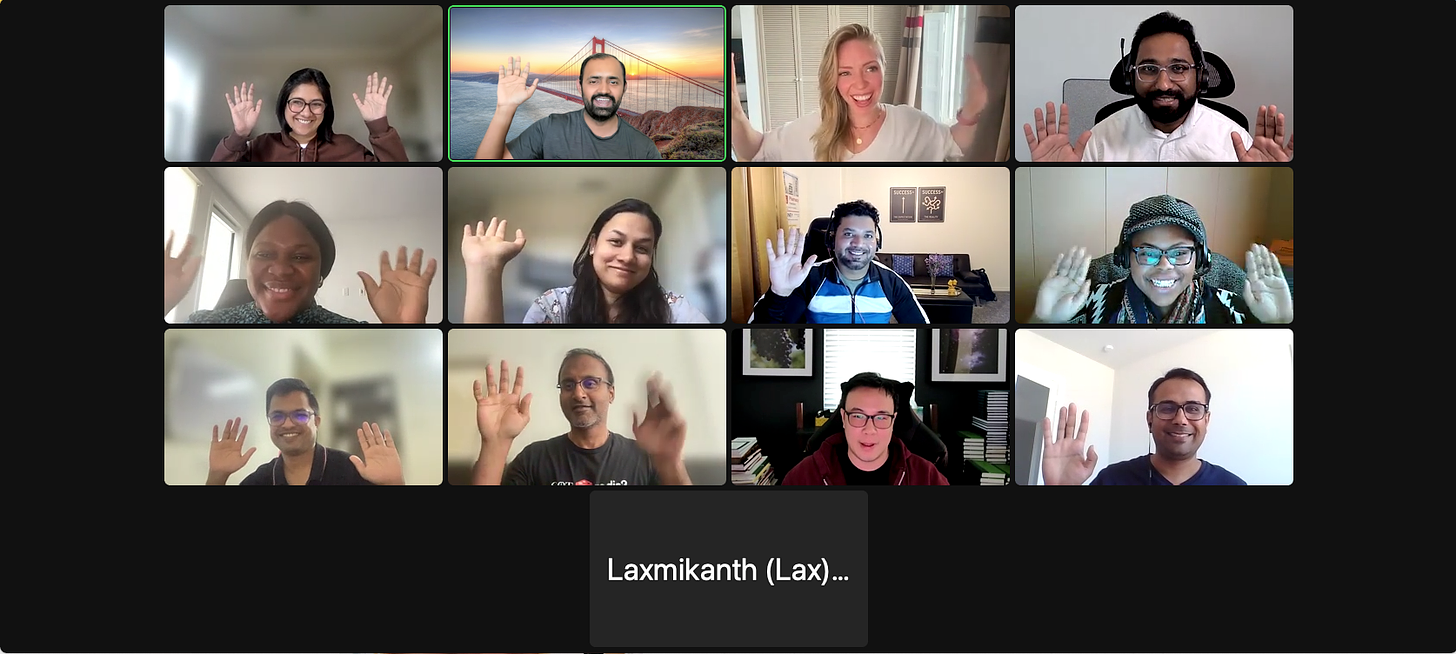Planning vs Doing / Keeping It Simple / Building Great Program Documentation
Welcome to 📮Monday TPM Field Dispatch 012 - Shortform thoughts on tech program management + curated content for further exploration, delivered every Monday to your inbox to kickstart your week.
1️⃣ Planning vs Doing
When are you done with planning?
When do you start the doing?
It is the existential question we Technical Program Managers wrestle with. In a world where velocity is king and often the only path for survival, how much emphasis do you place on “perfect” planning.
Geoff Charles is VP of Product at Ramp and his interview with Lenny Rachitsky was a treat to listen to. Why? Ramp is known as a company that can innovate rapidly. They are known for shipping features fast and iterate faster than their competitors both traditional and startup. Geoff dives into a lot of the philosophy at Ramp around velocity and how they plan and empower teams. If you listen to anything this week listen to this.
There is no such thing as a perfect plan however there is such a thing as not enough planning. Velocity needs a great plan but the fatal mistake by us TPMs is getting lost in the planning process which creates fissures between engineering and program management.
One advise I got from an extraordinary TPM was to build two plans:
10,000ft plan (low fidelity) → How do we get to the North Star? What are the stepping stones or little projects that get us there?
1000ft plan (high fidelity) → What is the 6-8wk view to get us to the next step?
Use this thinking framework not just for running programs but in your interview questions especially around how do you approach building plans for far out features or programs.
2️⃣ How creative do we want to be with the solution?
Time is running out. You have cut as much scope as you can without jeopardizing the end result. Adding more resources doesn’t add any benefit. What do you do?
You push the deadline OR
You decide how clever you want to be.
Many times you will be forced to assess whether the limited resources (human and time) allows you to be clever with the engineering or dead simple.
As TPMs, the value we bring to the table is asking the obvious questions that everyone is thinking about but not voicing - what is the most dead simple solution we can deploy to meet our goals and deadlines?
If none exist, you know what to do - delay the schedule.
3️⃣ Building Great Program Documentation
This post from Addy Osmani resonated with me so much for a few reasons.
A TPM leader once gave me this advise for whenever I felt stuck in a program:
Fire yourself right now.
Re-hire yourself and think about what you would do different.
How do you know if you are doing a good job with your program structure and documentation?
What happens if you leave the project tomorrow and someone else needs to take over?
Will they be able to understand the program and continue where you left off without delay?
Every documentation artifact we generate, every workflow we develop, it is more than just about this moment but for our future selves. These are maps that help us get back on the road when we feel lost in the details.
So, build great program documentation as if you were writing a letter to your future self, a guide for when you feel lost in the middle, and a compass for you to know if you are heading in the right direction. What does that mean?
Keep documentation up to date.
Only include the relevant information.
Follow best practices (either internal or industry where possible).
Don’t try to re-invent the wheel.
Build patterns for future programs.
Suggested Reading: https://addyosmani.com/blog/good-code/
4️⃣ That’s A Wrap! Another Cohort Done!
I wrapped up the second cohort of my course - Become a Great TPM.
What an extraordinary privilege and experience to share my stories, successes, failures and learnings with such an amazing global group of people.
The lively discussion and lived experience each of them shared about what they would do or have done in difficult moments running complex programs was just amazing.
I am forever grateful for Shannon Vettes - the extraordinary leader who has done it all from product to program to engineering. Her AMA just made the entire class experience 1000% more spectacular.
If you want to join my next cohort, sign up for the waitlist here. I will share the details for the next class soon.
How was this week’s newsletter?
P.S.
What does it take to Become A Great Technical Program Manager?
It took me years and many difficult projects at places like Apple, Google, Nike to understand what it means to be "Great".
😁 Good news for you, you won't have to spend years. Become a standout TPM in a few hours. Learn the skills and knowledge needed to gain senior leadership's trust to lead large cross-functional programs and take your career to the next level.
More real world examples.
More case studies.
More discussions.
More deep dive into topics like Systems Philosophy, Influence, Shape of Power, approaching complex technology and much more.
Now 2 Days long / 6-8 hours in total.
Course Fee: $899.
🚨 If you want to join my next cohort, 🚀 sign up for the waitlist here. I will share the details for the next class soon.
If you enjoy and love reading what I write, perhaps you know someone who could also enjoy and love reading these essays and dispatches. Share this with your friends and colleagues and lets grow together. 🙏 ☺️ ❤️
You can suggest topics or questions for me to write about in the future. It could be something you are curious about or maybe something you're struggling with right now.





